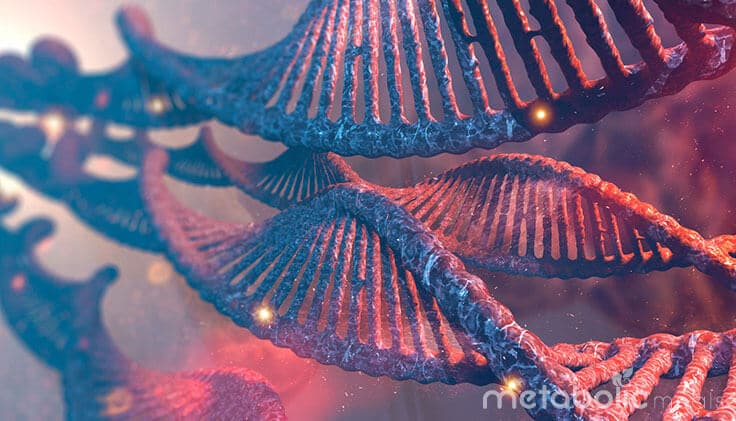To talk about nutrition, we can’t always rely on simple umbrella terms such as “good” and “bad.” After all, what’s not ideal for one person might not be as concerning for someone else, and this holds true for different kinds of dietary fat we consume.
If we want to keep it simple, we can divide dietary fats into two categories: saturated and unsaturated fats. Saturated fats have long been scrutinized because of their association with increased risks of cardiovascular disease. This is mainly due to studies suggesting that consuming large amounts of food high in saturated fat results in an increase in low-density lipoproteins — or LDL “bad cholesterol” — that carries a heightened risk of disease.

As science continues to explore the long-held myth that dietary fat is evil, the reviews and opinions of experts in the field of nutrition have become even more mixed. To deem saturated fat unhealthy, you need to consider context: Unhealthy for whom? Unhealthy compared to what?
We have a much different perspective on unsaturated fats — think the poly- and monounsaturated varieties found in olive oil, nuts, and fatty fish such as salmon. Certain omega-3 and omega-6 fatty acids such as alpha-linolenic acid and linoleic acid, respectively, are essential, meaning that our bodies can’t synthesize them and that we need to consume them in our diets for optimal health. The positive impacts of omega-3s like EPA and DHA (found in fish oil) include reducing LDL and curbing inflammation, which are why we typically consider them to be healthy.

The more we learn, though, the shakier this “good and bad fat” precedent becomes. Saturated fats, for instance, may indeed increase LDL. But besides trans fats, some saturated fats have also been shown to boost high-density lipoprotein cholesterol — or HDL “good cholesterol.” And when saturated fats are consumed as part of a well-balanced diet including plenty of fiber, the possible negative health effects might not be as dire. It still may be beneficial to limit them, but decades of evidence suggest that they might not be as harmful as we think.

In some cases, saturated fats can potentially be beneficial as well. For example, saturated fats known as MCTs or “medium-chain triglycerides” are metabolized differently from longer-chain fatty acids and are known to have many positive effects. They have been shown to have antibacterial properties and can help improve our immune system. Most notably, MCTs are rapidly converted into ketone bodies that have neuroprotective and cognitive benefits. Ketones have also been shown to help with hunger and can provide a quick burst of energy prior to exercise.
When it comes to deciding what types of fats are good or bad for you, genetics could play a role.
What Do Genetics Have to Do With It?

Blanket statements such as “saturated fat is bad” and “unsaturated fat is good” need to be put in context. Good or bad for what? For whom? Compared to what? In my experience, we should ask: “What fats in my diet do I respond well to, from which sources, and in what quantities?” Nutrition is nuanced, so we don’t have a one-size-fits-all answer.
Sure, excess consumption of saturated fats has been shown to increase total cholesterol levels, and high cholesterol is associated with cardiovascular disease. However, correlation doesn’t necessarily equal causation. For example, some dieters following a high-fat ketogenic diet who increase their saturated fat consumption experience improved blood-lipid levels even after switching over from a typical whole-food diet. This goes to show that everything is relative to the individual.
Although genes don’t determine what’s healthy and unhealthy with 100 percent certainty, they can help us determine what our body does well and what it doesn’t do as efficiently. For example, a single nucleotide polymorphism, or SNP, in the DNA of a gene can alter how that gene functions. For better or worse, the way your body reacts to specific types of fat can be affected by particular SNPs in certain genes, including these:
FTO: The ‘Obesity Gene’
One well-known example is the fat mass and obesity-associated gene known as FTO, which is a major genetic risk factor for obesity. With a diet high in saturated fat and low in polyunsaturated fats, this risk increases. People with certain variations in the FTO gene should avoid this dietary pattern, even if they don’t necessarily have to cut saturated fat entirely.
PPARG: The Metabolism Regulator
Peroxisome proliferator-activated receptor gamma, or PPARG, is a master regulator of fat and sugar metabolism. The genes activated by PPARG cause higher rates of lipid uptake and more insulin-sensitivity. In people with certain SNPs related to this gene, a diet low in polyunsaturated and monounsaturated fat and high in saturated fat dramatically increases the risks of Type 2 diabetes and obesity. People with variations in this gene should keep these risks in mind.
PPARA: Important for Ketogenesis
Peroxisome proliferator-activated receptor alpha, or PPARA, is similar to PPARG but regulates amino acid, fat, and carb metabolism. It’s activated by polyunsaturated fatty acids and plays an essential role in ketogenesis. Here, some SNPs can make a diet high in saturated fats and lower in polyunsaturated fats a substantial risk factor for Type 2 diabetes and even nonfatal heart attacks. For people with this genetic variance, following a ketogenic diet warrants extra nutritional savvy regarding which fats are consumed to hit their ketogenic macros.
FADS2: Factor for Omega-3 Essential Fatty Acid Conversion
FADS2 is a gene responsible for converting alpha-linolenic acid into the essential fatty acid EPA. There are polymorphisms in FADS2 that decrease your body’s efficiency of converting ALA to EPA by as much as 27 percent. This may be particularly important for vegans and vegetarians, as they rely on plant sources for their omega-3s instead of animal sources. Knowing that you have a certain SNP in this gene can help you determine your recommended omega-3 consumption and from what sources.
The Role of Genetic Testing
Here is where having a genetic test can come into play. Those who do not have certain polymorphisms, such as the few listed above, may have more room to include saturated fats in their diets because there is less associated risk of disease with their particular genetics. Identifying possible SNPs in genes that affect fat metabolism gives you a better idea of nutrition and lifestyle changes that you may need to incorporate to improve longevity and quality of life. In many cases, phenotype is just as important as genotype. By that, I mean that the way you live your lifestyle and the choices you make regarding your health play a significant role, as much if not more than your genetics. By educating yourself more on your own specific genetics, you can approach your lifestyle in a much more sophisticated way.
These are just a few examples of the many roles genetics plays in how your body responds to various kinds of dietary fats. With a genetic test such as 23andMe, you can identify which SNPs influence how your body absorbs, metabolizes, and uses nutrients. If you know how your body responds to particular nutrients, you can alter your diet accordingly to boost longevity and lower your risk of chronic disease.
Zac Bell is a Nutritional Health Coach at Metabolic Meals, supporting customers with their nutrition and fitness goals. Zac has a Bachelor’s Degree in Exercise Science.






